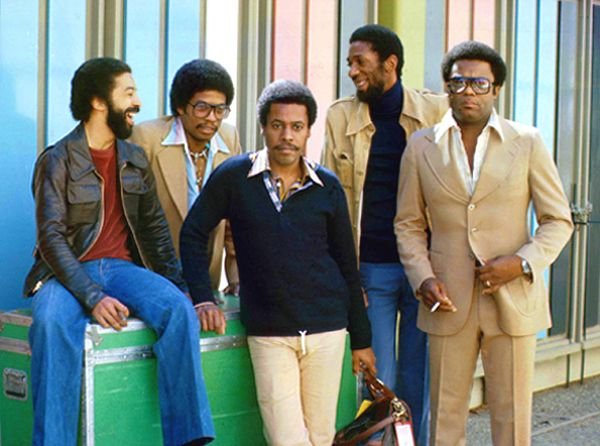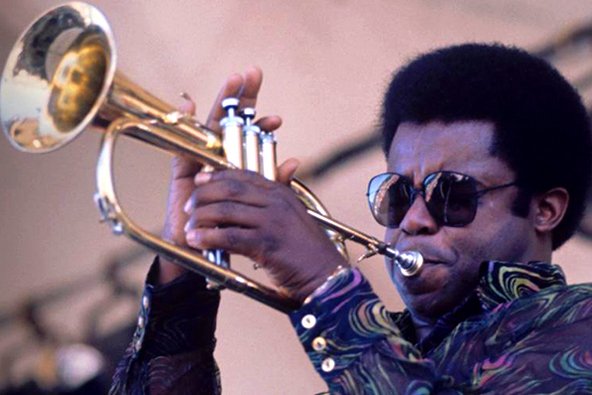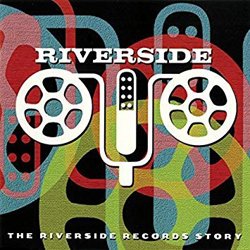The Jazz Messengers: Wayne Shorter (saxo tenor), Freddie Hubbard (trompeta), Curtis Fuller (trombón), Cedar Walton (piano), Reggie Workman (contrabajo) y Art Blakey (batería). Extraído del álbum Ugetsu (1963).
Freddie Hubbard disfrutó de sus mayores éxitos en la primera mitad de los años setenta con CTI Records. Sus cuatro primeros álbums para este sello Red Clay (1970), Straight Life (1971), First Light (1971), con el que recibió el Premio Grammy al mejor álbum de jazz instrumental de 1972, y Sky Dive (1973) son considerados como sus mejores trabajos gracias a la aportación del productor Creed Taylor equilibrando lo artístico con lo accesible. Sin embargo, en 1974 cambió a Columbia Records y los siete álbums que siguieron fueron criticados por ser demasiado comerciales. En 1977 hizo una gira con el grupo del pianista Herbie Hancock V.S.O.P. formado por exmiembros del segundo gran quinteto del legendario trompetista Miles Davis de mediados de los años sesenta.
Freddie Hubbard enjoyed his greatest hits in the first half of the 1970s with CTI Records. His first four albums for this label Red Clay (1970), Straight Life (1971), First Light (1971), which won the 1972 Grammy Award for “Best Jazz Performance by a Group”, and Sky Dive (1973) are considered his best works thanks to the contribution of producer Creed Taylor balancing the artistic with the accessible. However, in 1974 he switched to Columbia Records and the seven albums that followed were criticized for being too commercial. In 1977 he toured with pianist Herbie Hancock’s group V.S.O.P. consisting of former members of legendary trumpeter Miles Davis’ Second Great Quintet of the mid-1960s.

De izquierda a derecha: Tony Williams (batería), Herbie Hancock (piano),
Wayne Shorter (saxo tenor), Ron Carter (contrabajo) y Freddie Hubbard (trompeta).
Durante los años ochenta Hubbard reunió otra vez sus propios grupos y participó en conciertos y festivales por los Estados Unidos y Europa tocando hard bop y jazz modal. También colaboró con el pianista Benny Golson y de nuevo con el batería Art Blakey, y su álbum más destacado de aquella época es Double Take (1985), en el que toca con el excelente trompetista Woody Shaw. Trabajó para los sellos Blue Note, Pablo y Atlantic, pero a finales de los años ochenta empezó a tener problemas de salud y después de sufrir una grave lesión en los labios en 1992 se fue retirando de la música, aunque todavía publicó varios álbums más. Murió en el 2008 de un ataque al corazón a los 70 años de edad.
During the 1980s Hubbard gathered again his own groups and took part in concerts and festivals throughout the United States and Europe playing hard bop and modal jazz. He also collaborated with pianist Benny Golson and once more with drummer Art Blakey, and his most noteworthy album of that time is Double Take (1985), in which he plays with excellent trumpeter Woody Shaw. He worked for the Blue Note, Pablo and Atlantic labels, but in the late 1980s he began to have health problems and after suffering a serious lip injury in 1992 he retired gradually from music, although he still released several more albums. He died in 2008 of a heart attack at the age of 70.

En la introducción la batería acompaña al saxo y a la trompeta, y luego al contrabajo. La melodía principal del tema está compuesto por notas bien marcadas y separadas, y el puente es una frase normal en estructura AABA. El primero en aparecer es Fuller con un solo saltarín y divertido muy bien construido. A continuación entra Shorter con frases consistentes, pero a veces extrañas. Le sigue Hubbard rápido como un rayo sin tener tiempo ni para respirar. Después entra Walton también a gran velocidad incorporando acordes de vez en cuando. Finalmente el grupo reexpone el insólito tema desvaneciéndose.
In the introduction drums back up sax and trumpet, and then double bass. The main melody of the theme is made up of well marked and separated notes, and the bridge is a normal phrase in AABA structure. The first to appear is Fuller with a fun, bouncy and very well built solo. Next comes Shorter with consistent, but sometimes strange sentences. Hubbard follows fast as lightning without even having time to breathe. Then Walton enters also at high speed incorporating chords from time to time. Finally the group restates the unusual theme fading out.

Translated with the help of DeepL
℗ Riverside Records


Si te ha gustado el tema, quizá querrás escuchar también los anteriores de este álbum:
If you liked the track, you might also want to listen to the previous ones on this album:


Great combination of players.
Your post has been supported and upvoted from the Classical Music community (Subscribe at peakd) as it appears to be of interest to our community. We also support jazz and folk music posts!
If you enjoy our support of the #classical-music community, please consider a small upvote to help grow the support account!
You can find details about us below.
The classical music community at #classical-music, Peakd and Discord. Follow our community accounts @classical-music and @classical-radio or follow our curation trail (classical-radio) at Hive Vote!